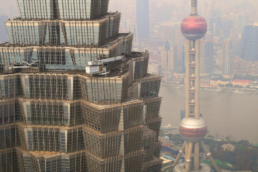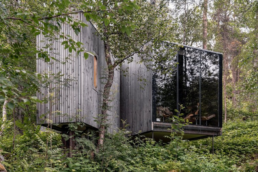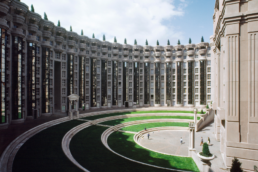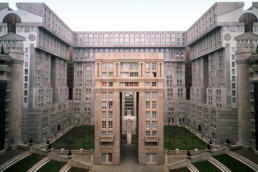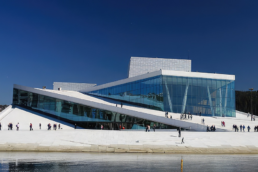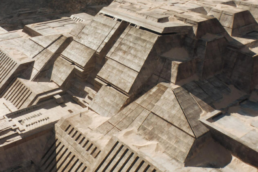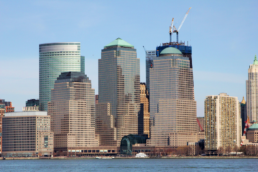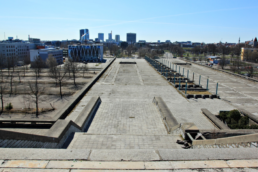Contemporary Architecture in Film
DATE
13.08.2025
Cinema has found in architecture a powerful ally for creating worlds and conveying emotions.
Specific spaces—whether built or digital—not only serve as backdrops but also define characters, tensions, and atmospheres. When a director collaborates with contemporary architects or design studios, the result can turn a film into a truly sensorial and spatial experience.
One of the most striking examples is the influence of Barozzi Veiga in Blade Runner 2049. The Catalan studio designed a project for the Neanderthal Museum in Piloña that was never built, but its conceptual power led the film’s art team to recreate its minimalist, dark, and brutalist aesthetic in the lair of the villain, Wallace. Architecture—though never physically executed—shaped a visionary space, composed of neon and concrete, capturing the dystopian spirit and visual rigor of the Blade Runner universe.
In Dune (2021–24), architecture amplifies contrasts between cultures and environments. The palace of Arrakis, inspired by Mayan ziggurats and brutalist monuments, represents a closed, protective power facing the harsh desert. In contrast, the Fremen dwellings carved into underground sietches reflect a radical symbiosis with their surroundings. The production team, led by Patrice Vermette, drew from references such as Frank Lloyd Wright’s temples and Carlo Scarpa’s Brion Tomb to give emotional and spatial authenticity to the Imperium. Even conceptually, architectural works like RCR Arquitectes’ Perelada Wineries seem to have inspired the film’s set designers.
Finally, Abraxas, Ricardo Bofill’s complex in France, deeply influenced the visual identity of The Hunger Games saga, inspiring the Capitol’s design. Its giant arcades, pastel tones, and symmetrical aesthetics reflect an artificial and utopian order, contrasting with the brutality of Panem. Architecture becomes both a political and emotional symbol, highlighting social and cultural disparities without a single word. Some scenes—like when the protagonists run through the city and find themselves cornered—gain strength from the enveloping backdrop of Bofill’s postmodernist architecture.
Beyond these examples, many films have used contemporary architecture to enhance their visual storytelling. In Her (2013), directed by Spike Jonze, the backdrop of Shanghai—featuring the Jin Mao Tower and the World Financial Center—helped convey a soft, optimistic, and technologically advanced vision of the future. The blend of real and digital architecture became imperceptible, creating an emotional atmosphere intimately tied to the setting. In Ex Machina (2015), the retreat of the character played by Oscar Isaac was filmed at the Juvet Landscape Hotel in Norway, designed by Jensen & Skodvin, a construction that combines brutalism with landscape sensitivity—perfect to emphasize the tension between nature and technology. In Tenet (2020), Christopher Nolan chose locations like the Oslo Opera House by Snøhetta or the brutalist Linnahall in Tallinn to construct his fragmented narrative of espionage and time. These examples show that architecture doesn’t just provide setting—it communicates, intensifies, and gives shape to contemporary cinematic storytelling.
MArch Valencia. Arquitectura y Diseño
© 2025 MArch Valencia. Arquitectura y Diseño
Privacy policy | Cookies policy | Terms of use



